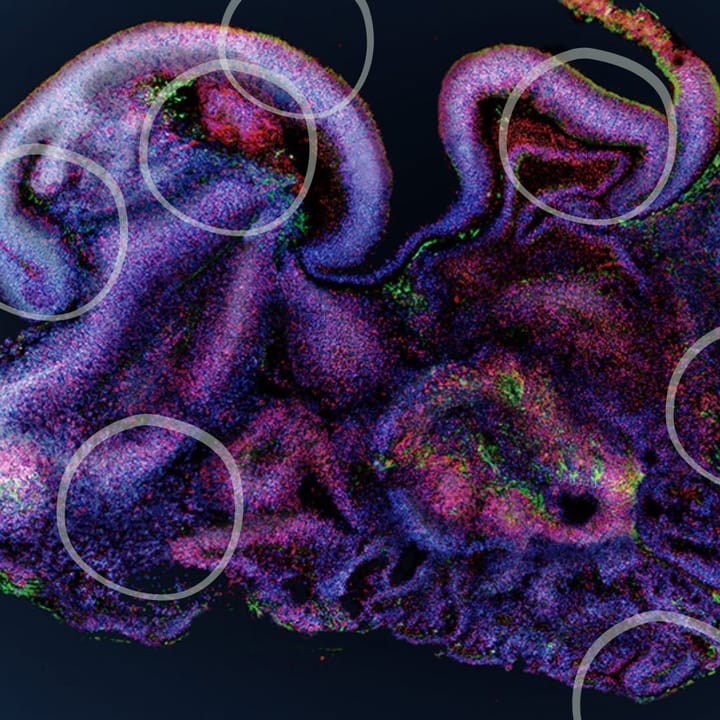Researchers have recently identified a DNA region, known as VNTR2-1, which drives the activity of the telomerase encoding gene and influences the ageing of certain cell types. By Sara Majernikova.
Humans are made of trillions of living cells, ageing until they eventually stop dividing and replicating. Scientists have long known that genes influence age and the length of people's lives, but how exactly this occurs remains unclear. Findings from a new study by Tao Xu and his team at Washington State University have solved a small piece of the puzzle, bringing scientists one step closer to solving the mysteries of ageing and cancer [1].
Almost half of our genome is composed of repetitive DNA that does not encode proteins. Non-coding RNA (including transfer RNA, noncoding regulatory RNA, and ribosomal RNA) is produced using non-coding DNA (ncDNA). Importantly, some ncDNA sequences have been shown to operate as genetic "switches'', influencing where and when genes are expressed.
In the context of ageing and cancer, ncDNA sequences regulate telomerase gene activity. Telomerase is a ribonucleoprotein enzyme that adds repeated sequences to the 3' end of telomeres, which are caps at the ends of each DNA strand that safeguard chromosomes within cells [2]. The telomerase reverse transcriptase gene (hTERT) regulates the telomerase enzyme’s activity, and hence the regulation of telomere production. Telomeres in normal cells grow a little shorter every time cells copy DNA before dividing. Cells cannot multiply when telomeres get too short, leading them to age and perish. However, if hTERT activity were to remain constant, or even enhanced such that telomeres are reset to the same length upon cell duplication, then cells could rapidly develop into cancers. Particularly, 90% of human tumours have been shown to arise from abnormal activity in hTERT [3]. In essence, elongated telomeres act as an inflection point for cells to rapidly proliferate and cause cancers, whilst controlled and shortened telomeres generally tend to reflect ageing; does this mean that a balance between the two, where constant telomere length is maintained, results in enhancement of longevity?
The DNA sequence VNTR2-1, a type of ncDNA called a variable number tandem repeat element, seems to drive the activation of the hTERT and has been demonstrated to prevent ageing in some cells. Researchers discovered the link between the VNTR2-1 region and the telomerase gene by deleting the VNTR2-1 DNA sequence from cancer cells, both in human and mice cell lines, which caused telomeres to shorten, cells to age, and tumours to stop growing [3]. VNTR2-1 length in humans varies greatly, ranging from 53 to 160 copies of 42 base pair repeats. In African Americans, for example, the VNTR2-1 sequence of hTERT alleles is significantly shorter than in other ethnic groups [3]. Examining this more closely, it was found that significantly fewer centenarians had a short VNTR2-1 sequence compared to the control group. As VNTR2-1 promotes telomerase expression, this research demonstrates that the gene is more active in individuals with longer sequences and suggests that VNTR2-1-mediated hTERT regulation plays a role in human ageing and cancer.
There are, however, limitations to this research. For example, other studies have found that a short VNTR2-1 sequence does not necessarily imply a shortened life span; in fact, lesser telomerase activity, and consequently shorter telomere length, may reduce the likelihood of cancer development. Because telomerase activity is suppressed in replicating human somatic cells, their short telomeres continue to shorten with age after birth. Ultimately, the picture is far more nuanced than observing just the effects of a simple oncogene mutation, and makes for a compelling justification for examining this so-called junk DNA in greater depth. Telomerase gene therapy is a proposed clinical experiment aimed at extending telomeres in order to prevent, postpone, or possibly reverse ageing. This may propel research on the development of telomerase gene therapy, where cells are programmed to express hTERT in humans to potentially cure ageing and age-related pathologies [3].
Bibliography
1. Zhu X, Xu T, Zhu J. The regulatory function of tandem repeat VNTR2 ‐1 in hTERT gene involves basic Helix–loop–helix family transcription factors. Environmental and Molecular Mutagenesis. 2021;62(6):338-349.
2. Zhang F, Cheng D, Wang S, Zhu J. Human Specific Regulation of the Telomerase Reverse Transcriptase Gene. Genes. 2016;7(7):30.
3. Xu T, Cheng D, Zhao Y, Zhang J, Zhu X, Zhang F et al. Polymorphic tandem DNA repeats activate the human telomerase reverse transcriptase gene. Proceedings of the National Academy of Sciences. 2021;118(26).





